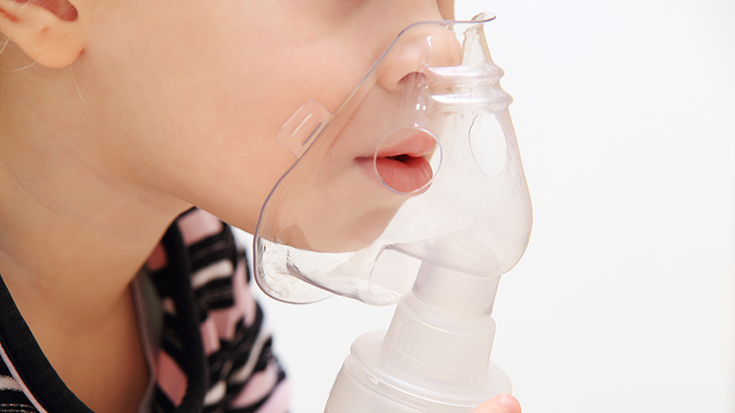
Performing pulmonary function tests in young children can pose special challenges, in part because they don’t like the mouthpiece and noseclips required for many of the tests.
A recent study in the Journal of Cystic Fibrosis found the facemask could be a more child-friendly option for the multiple breath washout (MBW) test, which is often used to track lung function overtime in children with cystic fibrosis (CF), without degrading the quality of the test.
An RT weighs in
Elizabeth Koch, MRC, RRT, RPFT, is a clinical supervisor at Cincinnati Children’s Hospital Medical Center in Cincinnati, OH, who’s involved with the testing of young children with a range of conditions, including CF.
She agrees the facemask can be beneficial when calculating the lung clearance index (LCI) with the MBW in toddlers, who have a hard time maintaining a seal around the mouthpiece for the two minutes or more of tidal breathing required for the test.
“A good seal is needed or lung volume measurements will be falsely elevated due to leaks,” she said.
Even with the facemask, though, she notes the test can be very technician intensive.
“We utilize two people to obtain LCI by MBW in this younger population,” Koch said. ”One to hold the mask and one to run the computer.”
They also play videos during the test to distract the children from the mask, or plan the test around nap time.
But it’s not for everyone
However, while the facemask may be good for CF children undergoing the MBW, Koch doesn’t believe it will work for all children.
“Within our CF population the patients are used to using masks with all the treatments they do, so that makes using a mask for testing much easier and more successful with the CF patients for MBW,” she said. “But in other patient populations — and children in general — they have mask-phobia, and it would not be easier to utilize a mask for testing.”
In her experience, children typically breakdown and become nervous when a mask is put up to their face. If masks were to be adopted for all MBW tests, she believes children would probably have to be desensitized to the mask before any testing could occur.
Koch also says masks fell short at her hospital when they tried using them to measure respiratory muscle strength — MIP, MEP, and peak cough flow — in their neuromuscular patients.
The thought was that masks would be better for these patients since they do have muscle weakness and thus a difficult time maintaining a good seal with the mouthpiece. However, values were not improved, and in most cases, were even lower than when a mouthpiece was used.
Stick with the mouthpiece and noseclips
She’s not sure other PFT measurements — spirometry, lung volumes, or diffusion — could be captured via a mask interface at all.
“I believe that resistance and airflow would be affected as we know it, and we would need to have various studies to see if this changes flowrates, and flow-volume patterns,” Koch said.
At Cincinnati Children’s, Koch says they always use a mouthpiece and noseclip for spirometry and impulse oscillometry. She notes almost all references and history of testing have been done with this interface and it allows for better airflow and less resistance.
“This is a major factor in forced maneuvers or resistance measurements,” Koch said.
Keep the conversation going
What is your experience using a facemask versus a mouthpiece and noseclips? Share your thoughts at AARConnect.